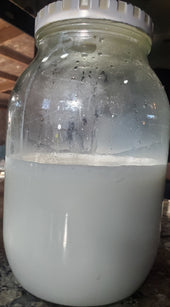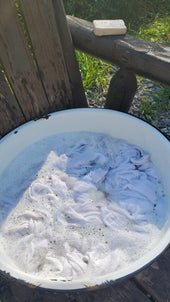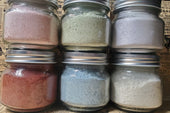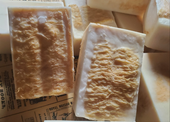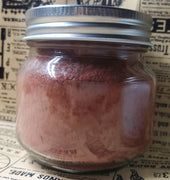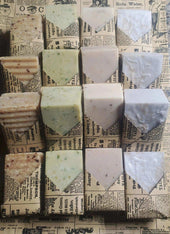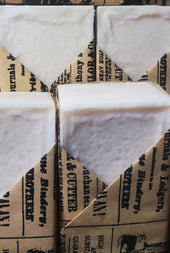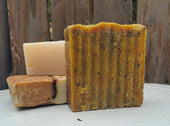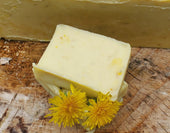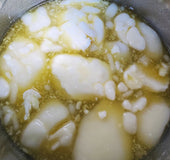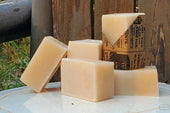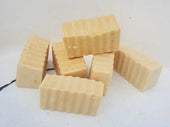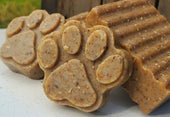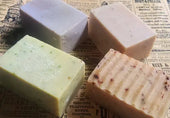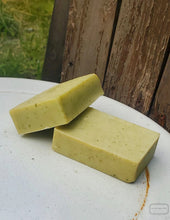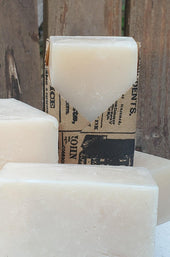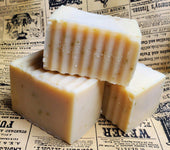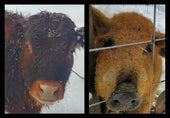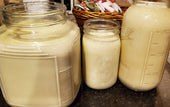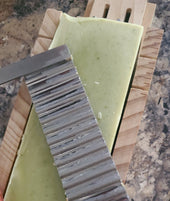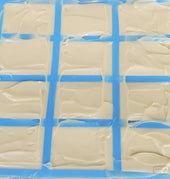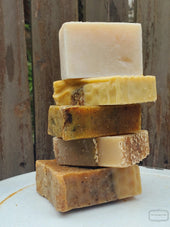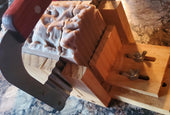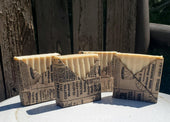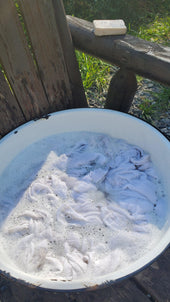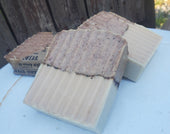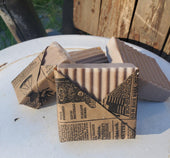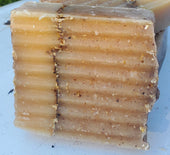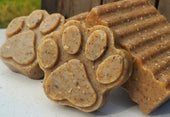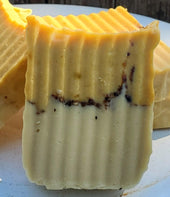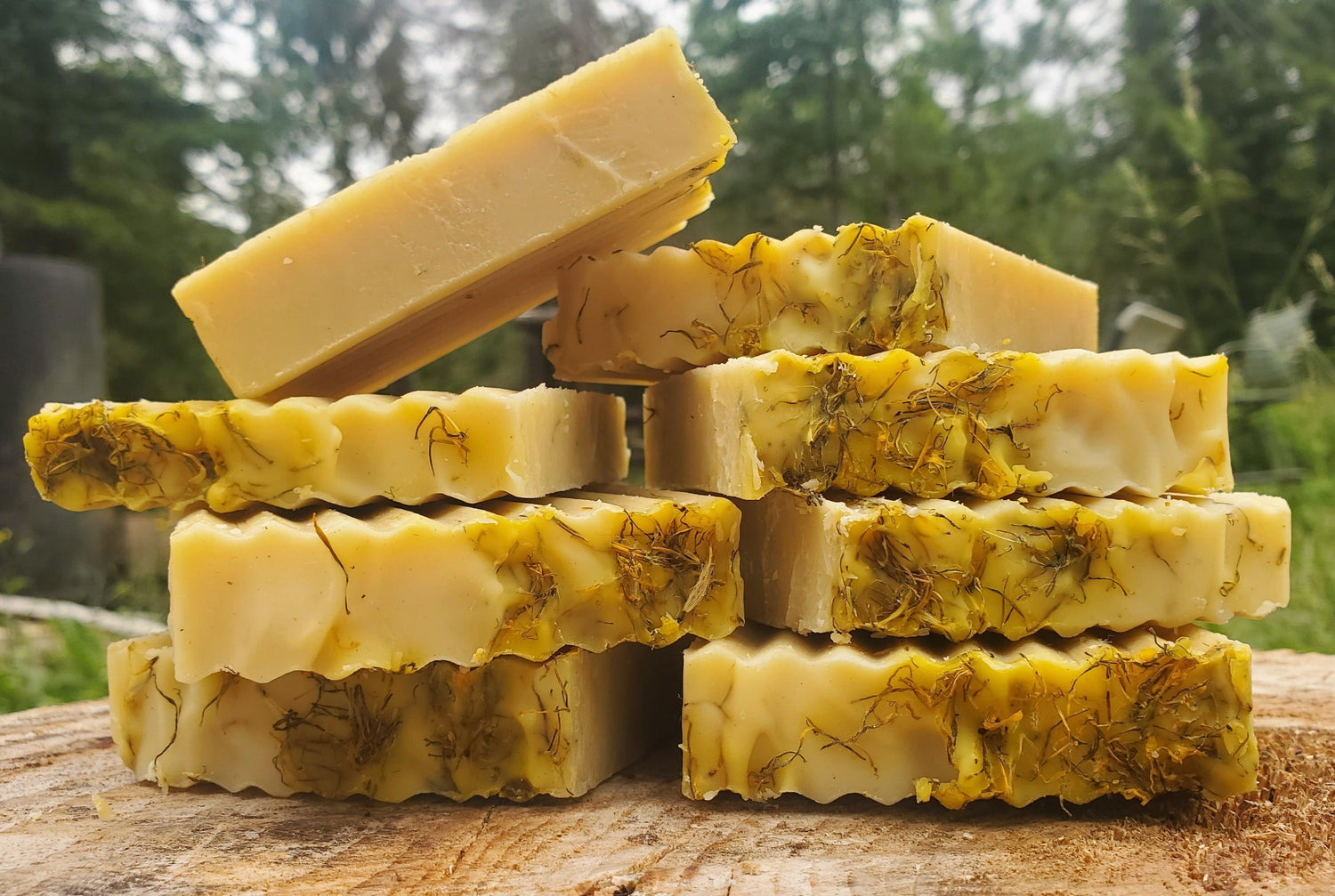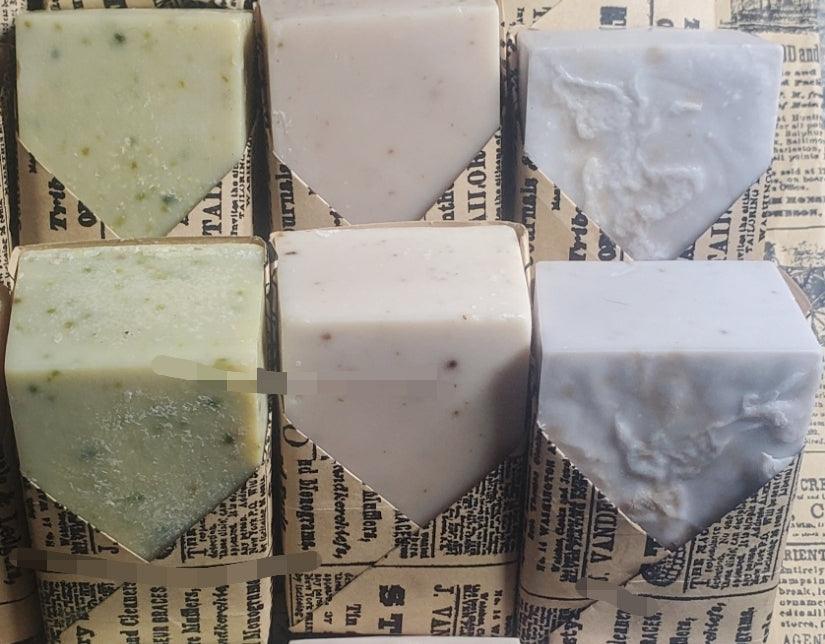American consumers often use the words “soap” and “detergent” interchangeably, but in reality there are significant differences between these two types of cleaners.
Cold Process Soap is NOT a Detergent!
It should also be noted that a cold process soap is just that - soap. A TRUE SOAP.
There are several differences between true soap and detergent but the main thing to know is that detergents are synthetic formulations that were created to mimic how soap cleans. When there was a shortage of animal and vegetable fats, the usual natural soapmaking ingredients, scientists created detergents using petroleum, as a substitute for soap. So although detergents and soaps clean in the same manner, they are created differently.
Soapmaking combines natural fats and oils with an alkali, lye, to produce soap in a process called saponification. Detergents are primarily petrochemical, crude oil, and sulfuric acid based surfactants. True Soap is a natural surfactant which means it allows water to clean better by keeping the water molecules from sticking to themselves lmagine a drop of water staying bubbled up on a table. When the water can spread out, it more easily interacts with the oil and grease and can then more easily wash it away
Soaps are made from natural ingredients like vegetable oils or animal fats, while detergents are synthetic, man-made chemicals derived from petroleum products. Soaps are generally more biodegradable and environmentally friendly compared to detergents. Detergents are often designed to be more effective in hard water and have a wider range of cleaning applications than soaps.
Soaps are generally considered more biodegradable and less harmful to the environment than detergents. Soaps tend to form "Soap Scum" in hard water, while detergents are designed to work well in hard water conditions. Soaps are commonly used for personal hygiene like handwashing and bathing, while detergents are used for a wider variety of cleaning tasks like laundry and dishwashing.
The earliest evidence of soap can be traced back to 2800 B.C., where historians believe it was used by the ancient Babylonians. Soap making is mentioned in ancient Roman documents written as early as 70 A.D.
Fast forward to Medieval Europe where soap making is an established craft with centers in France, Spain and Italy. During that time the use of soap was a luxury enjoyed mainly by those who could afford it. Manufactured bar soaps weren’t available until the late 18th century in Europe and the U.S. Widespread use of soap during this period can be attributed to advertising campaigns touting the relationship between good personal hygiene and health.
Detergents, however, entered the picture about 1916 when World War 1 soap ingredient shortages encouraged manufacturers to develop synthetic cleaners to meet demand. By the 1950s detergents had overtaken traditional soap products in homes across America. Today, detergents are used for laundering, dishwashing and many other types of cleaning.
While soap is limited in its applications, detergents can be formulated to include other ingredients for all sorts of cleaning purposes. Perhaps the most common and versatile of these ingredients are surfactants … surface active agents.
Surfactants aid in cleaning because they reduce surface tension and improve water’s ability to spread evenly over it. This creates a more uniform wetness that makes dirt and soil easier to wipe away and remove. Surfactant molecules can also have either a positive or negative charge, with one end attracted to water and the other end attracted to dirt and grease. This helps detergents attach to dirt, break it up and let water wash it away.
Most cleaning products today are detergents. One of the biggest reasons for this is the way soap reacts with water. While detergents are free-rinsing, meaning they don’t leave a residue, soap needs a clear water wash after application or it will leave a film.
Hard water is the enemy of soap. In hard water conditions soaps form scum. Soap scum affects more than just cleanliness; it can deteriorate fabrics and eventually ruin clothing or other surfaces. Conversely, detergents can work in any level of water hardness since they react less to the many minerals in hard water.
Finally, soaps need warm water to work at all. Detergents, on the other hand, can be built to perform well in any water temperature. This versatility enables detergents to be used in everything from shampoo to laundry liquid to hand cleansers and stain removers.
Because of their versatility in formulation, detergents are used almost exclusively today in commercial, industrial and facility cleaning. Detergents can be built to suit specific cleaning tasks – laundry, degreasing, carpet care, or floor cleaning, for example. They can be formulated as acidic, alkaline or pH neutral, and ingredients such as enzymes can be added to aid in these specific applications. A number of commercial hand care products still have the word “soap” in their name, even though they are really detergents.
Many people believe soap to be the better environmental option, but the truth is both soaps and detergents can impact the environment to some degree. Commercial soap production utilizes expensive natural resources like vegetable oil. Soap requires extra water for rinsing plus more energy to heat the wash water. Detergents typically consume fewer natural resources in the manufacturing process and many surfactants used today biodegrade quickly in sewage treatment plants before entering the natural world.
As is the case with all chemicals, there is a tradeoff between the upsides and the downsides of manufacturing and using them. While both soaps and detergents may have some environmental impact, the health and cleanliness benefits for individuals and society far outweigh them. The choice is yours.
Thanks for Reading! -- The Lazy Dairy Maid
Author: Lazy Dairy Maid --
Sharing a daily routine with these animals and nurturing the land has instilled a deep appreciation for natural ingredients and time-honored traditions, like bread baking, cheesemaking, and the art of cold process soap production.
Side Note: This blog post focuses on the process of making soap and the distinction between a soap and a detergent. It does not delve into the specific properties of any soap itself, as those would fall under the purview of the FDA as cosmetics or drugs.
This blog post aims to inform it's readers about saponification, highlighting the care and craftsmanship involved in creating this natural and luxurious product, goat milk soap.



